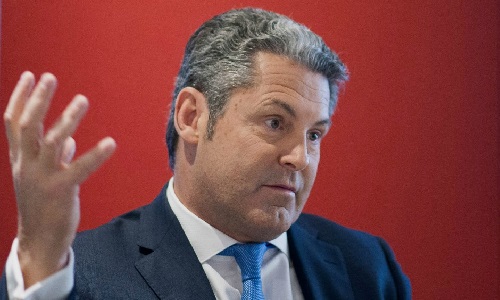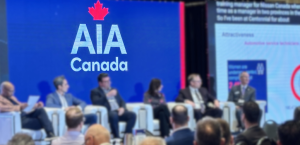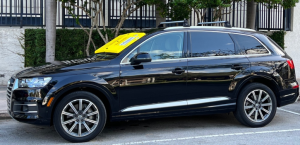By Jeff Sanford
Toronto, Ontario — February 26, 2018 — In this week’s Tuesday Ticker, earnings reports from Uni-Select, CEO insight from LKQ, Intact auto hit with collision claim costs, and much more!
Earnings season is well underway. Over the past week several companies in the auto aftermarket reported financial results for the fourth quarter. Results were generally positive overall.
Uni-Select
Quebec-based paint supplier Uni-Select reported financial results for both the fourth quarter and the full 2017 year. According to a press release sales were up an impressive 42.6 percent to $415 million in the fourth quarter. For the full 2017 year sales were up 21 percent to $1.4 billion. The increase in sales was due in part to the recent acquisition of Parts Alliance and other acquisitions, although organic sales growth in the Canadian and UK operations also contributed to the increase. Henry Buckley, president and chief executive officer, was quoted as saying, “Our fourth quarter performance was mixed. While our consolidated sales and [earnings] increased by 42.6 percent and 10.4 percent respectively, mainly driven by acquisitions, we continued to work through some challenges at FinishMaster U.S. Conversely, our Canadian business performed well with continued sales and margin improvement, driven by solid organic sales growth and the contribution of recent acquisitions.” The Canadian Automotive Group delivered sales growth of 5.9 percent. Sales for the group were $123 million, compared to $110.2 million in 2016, an increase of 11.6 percent. The increase was attributed to recent business acquisitions, the strength of the Canadian dollar and growth in sales. The increase in sales came from independent customers, the Bumper to Bumper auto parts chain and the FinishMaster paint body stores in Canada. The company reported the improved margins on earnings were a result of, among other things, optimal buying conditions (due to increased volume) and lower IT expenses. For 2018 Uni-Select announced that it expects consolidated organic sales growth of 2.25 percent to 4 percent. The recent passing of the U.S. tax cut bill will see income tax rate for FinishMaster decrease from 38 percent in 2017, to approximately 24.5 percent in 2018. As well, Uni-Select said it expects to invest between $26 and $29 million on vehicle fleet, hardware equipment and software in the year to come.
LKQ Corporation
The largest publicly-traded auto recycler in North America, LKQ, reported earnings this past week. Ryan Merkel, an analyst with brokerage William Blair, noted results were what investors wanted to see. The company was a penny off estimates – reporting earnings per share of $0.41, versus estimates of $0.42 per share. The company reported that sales were up nicely, but higher personnel costs cut into earnings in North America. Overall, organic growth of 4 percent to 6 percent was as expected. Daily revenue in North America advanced by 5 percent, which is interesting. William Blair has promoted LKQ stock to clients as a good investment based on an assumption that LKQ will outperform other auto parts retailers in North America. The investment thesis is this: As the cost of repair rises, more insurance companies have to turn to recycled parts to control costs, and that’s good news for LKQ, which has emerged as a major player in “Like Kind Quality” parts sector. According to a report released to clients this week by Merkel, LKQ is outperforming auto parts retailers in North America. According to Merkel, earnings of $253 million, “beat our model by 4 percent. LKQ bulls saw what they needed from this report. We expect shares to rise modestly as our thesis is on track. We believe LKQ’s dominant market position and steady low-double-digit [earnings per share] growth are not fully appreciated by the Street at current share price levels.” In a conference call last week LKQ’s chief executive officer, Dominick Zarcone, said that the “fourth quarter highlighted excellent momentum in our business, particularly in our North American segment.” Revenue was $2.5 billion, a 15 percent increase over the $2.15 billion recorded in the fourth quarter of last year. Total revenue growth from parts and services was 14.3 percent. According to Zarcone, “Importantly, organic revenue growth in parts and services on a global basis was 4.8 percent during the fourth quarter. As mentioned in the last call, very few companies in our sector are generating organic growth at this level.” The CEO went on to note that organic revenue growth for parts and services in North America was 5 percent over the quarter. Zarcone said, “We clearly ended the year on a high note, as the same day organic growth rates for the four quarters of 2017 were 1.8 percent, 2.8 percent, 4 percent and 5 percent, respectively, demonstrating the momentum gained as we progress throughout the year. As witnessed for several quarters now, we continue to grow our parts and services revenue faster than the repair market as a whole. According to CCC, collision and liability-related auto claims on a national basis were up 3.5 percent in the fourth quarter of 2017. So, our organic growth of 5 percent in Q4, again, reflects an out-performance relative to the market as a whole. This continued growth gives us confidence as we move into 2018, particularly as we appear to be in the midst of a more normalized winter here in the United States.” Zarcone also mentioned that repair cycle times have increased nearly one full day over the past two years. At the same time the average cost per part and hourly labour rates (in terms of cost per repair) are rising. As a result, “the value proposition of our alternative parts continues to be attractive to the insurance carriers. We are also optimistic about our North American operations due to the favourable trends relating to more vehicles falling into our collisions sweet spot.” LKQ also managed this strong quarter at a time when the U.S. Department of Transportation notes that the average number of miles driven in the United States was up only 1.1 percent on a nationwide basis in November. According to Zarcone, “With miles driven in the northeast only up nine-tenths of 1 percent and actually down seven-tenths of 1 percent in the north central region, both in part markets for our North American business… our North American segment generated the best growth in [earnings] margins we’ve achieved in the past five years. I could not be more proud of the effort of our North American team.” Zarcone also noted that the recent hurricanes in the southern U.S. provided the company with lots of vehicles and parts to resell. “As discussed last quarter, we anticipated that the two hurricanes in Q3 would create an opportunity to increase our bidding and procurement activities of high value total loss vehicles. And indeed, we increased vehicle purchases… [this] added a temporary increase to our working capital and a reduction in operating cash flow. Similar to what happened in the aftermath of Hurricane Sandy in 2012, we believe these enhanced inventory levels will foster the continued growth of our recycling business,” said Zarcone. As with most companies reporting financials this quarter there is some discussion of the Trump tax cuts. In the case of LKQ, “we anticipate a meaningful reduction in our effective tax rate, that when compared to the rate in 2017 will save LKQ approximately $85 million, representing an increase in earnings per share of approximately $0.28 in 2018. Since the company was founded in 1998, the focus has been to reinvest all the free cash flow back into the business to support our growth. That will be the case with the majority of the enhanced free cash flow resulting from the tax savings.” But Zarcone also said that some of the savings from the tax cuts will be used to invest in the business and employees. That is, not all the tax savings will be passed along to investors. Some commentators have urged corporate leaders to distribute the benefits of the tax cut among all stakeholders and not just to shareholders. Zarcone, to his credit, seems to heed this message. “We will, however, utilize a portion of the benefit to invest in our people and the communities in which we operate, through a series of long-term benefit enhancements and other programs, primarily in the U.S. These include enhancements to our healthcare, retirement, and PTO benefit programs. We are also funding some employee-focused education programs and will be establishing the LKQ foundation as a tax efficient vehicle to support our communities. In total, the annual cost of these programs will be about $20 million or $0.05 a share. It’s important to recognize that while the tax savings will be incorporated into the tax provision, the funding of these important programs will increase operating expenses, slightly reducing the margins of our North American and Specialty segments. But the net benefit is significant with an estimated uptick of approximately $0.23 a share in 2018,” said Zarcone on the conference call. During the question and answer part of the call Zarcone noted that, “We are still feeling some softness in a couple of product categories. Paint was up only 1 percent. The good news there is that’s the first quarter in the last five quarters where paint actually had a positive growth rate.”
Intact Insurance
Intact Insurance recently released earnings. Management at the company expressed disappointment about the Toronto-based insurer’s financial results. The problems were in the personal auto sector, where the rising cost of repair has resulted in financial results that are “unsatisfactory.” According to the company, new vehicle technology and more expensive parts (such as those related to ADAS) are having an effect on the bottom line. The so-called “combined ratio” in personal auto (a measure of profitability) was 101.2 percent for the three months ending Deccember 31, 2017. That’s 0.3 points from 100.9 percent in the fourth quarter of 2016 and suggests the company is spending more for repairs than it is taking in through fees. For the whole of 2017 the combined ratio in personal auto was 101.7 percent. That is a large increase of 1.8 points up from the 99.9 percent registered in 2016. The chief executive officer of Intact was quoted as saying, “Physical damage inflation remains the main driver of our current under-performance [in the most recent quarter], but severe weather was also a factor. [This was] largely driven by costs of repairs, largely driven by technology. Parts are more costly, [and] the repairs are more complex and take more time.” The CEO went on to say that the company will address the issues in personal auto by implementing a “faster determination” of whether a car is repairable or whether it is a total loss. By doing so the company hopes to reduce towing and storage fees. The vice president of claims at Intact, Patrick Barbeau, was quoted as saying, “A lot of costs in physical damage are outside the actual repair. When you are able to be more efficient in the repair process itself, you save significant portions of the costs on the rentals.” The average length of a rental in the repair sector was up across North America last year. But even as repairs become more complex, the industry is evolving to handle the new era of vehicle complexity. Barbeau said that an increasing level of specialization among some collision repair shops is helping to increase the efficiency of the repair process. “We see bodyshops getting more specialized in some types of repairs than others. And when you can deploy to the front line clear indications of where to guide our clients to get their car repaired, depending on the model, depending on the type of accident, you get significant savings. That has evolved over time. A few years ago, bodyshops were more generalist.” Arguably, the widespread adoption of ADAS technology is just now showing up on the books of the insurers. The CEO of Intact was also quoted as saying, “Eighteen months ago, in the third quarter of 2016, the results in automobile insurance took a turn in a direction we didn’t like. This was primarily driven by bodily injury as well as accident benefits. Part of it was reporting of larger claims from years 2013 to 2014.”





































